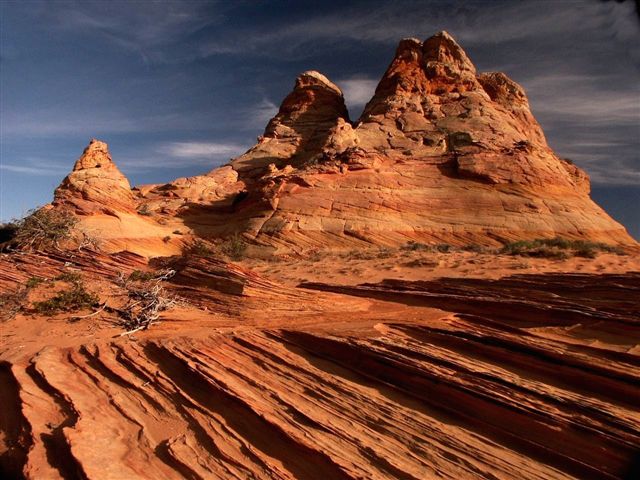Oak Creek Canyon: Before Sedona
Sedona is known for its grand views and mystical connections and has been for many years. Originally, it was an incredibly rural ranching community known mostly for its natural beauty. Once that beauty became known throughout the motion picture industry, Sedona’s popularity skyrocketed. The city of Sedona was officially incorporated in 1988 but its history began years before. Native Americans had been living in the area since the year 900, building pueblos and farming. Evidence of many different tribes has been found in the area, including the Sinagua, Yavapai, and Apache peoples. However, this idyllic canyon was not spared the tragic sweeping invasion of Europeans. The very first Europeans arrived in 1583 in search of gold. By 1875, the soldiers of Fort Verde, now Camp Verde, captured the last group of Tonto Apache Native Americans in the area, the others either fled or also captured.
The story of Sedona as we known it actually begins in Oak Creek Canyon. The very first white settler there was a man named J.J. Thompson, who claimed land under the 1862 Homestead Act. In 1876, Thompson took squatters rights to a parcel of land across from today’s Indian Gardens Store. Once Tompson explored his land, he found a deserted Native American garden and a healthy spring, which encouraged him to build there. Originally called Indian Gardens Ranch, the name was later shortened to Indian Gardens. After Thompson homesteaded in the canyon, more settlers followed. The Abraham family became the first residents of this small community, taking land just south of J.J. Thompson’s property. The small family of three, husband, wife, and child arrived in 1879. James Abraham is credited with naming many of Sedona’s most well known geographical features. According to old records, he named Bell Rock, Steamboat Rock, Court Rock and Church Rock. It wasn’t until years later that Court Rock and Church Rock became Courthouse Rock and Cathedral Rock. With an increased population and therefore more manpower, the settlers were able to create irrigation to plant crops and orchards. The irrigation system used by these settlers is credited to Frank Pendley. Pendley’s engineering skills made him so successful that his produce was sold at markets all the way in Los Angeles. His irrigation system still stands today at Slide Rock State Park.
-
In late 1901, T.C. Schnebly and his wife Sedona built a large home near modern day Tlaquepaque Arts and Crafts Village. Not long after they arrived, residents of the small settlement began complaining to the Schneblys about poor mail service. Upon hearing this, T.C filed an application for the establishment of a post office in his home. The need for a post office was undeniable; the naming of the place proved to be challenging. T.C. reportedly suggested calling the post office Schnebly Station, then Red Rock Crossing and even Oak Creek Station.
These names were apparently not accepted by the government because they were too long. The story goes that T.C’s brother, Dorsey Ellsworth, suggested submitting the name of T.C’s wife. Postal officials approved the name Sedona, and on June 26, 1902, the post office was established in the back of the Schnebly home.
Many of these historical sites are still standing today and can be visited. There are too many sights to possibly see in a day; an entire weekend can easily be spent adventuring in Old Sedona. Local hotels, such as the Southwest Inn in Sedona, are the best choices for tourists looking for an authentic trip.




Comments
Post a Comment